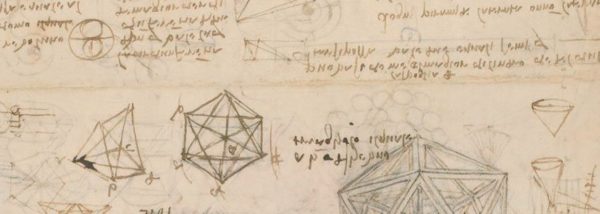The proposed logo for the International Horticultural Congress of the ISHS is the creative result of an accurate historical research that leads us to one of major and oldest artistic and cultural sites in Milano, the Biblioteca Ambrosiana, where precious manuscript volumes are kept, including the De Divina Proportione by Fra ‘Luca Pacioli, a splendid codex illustrated by extraordinary geometric drawings and the famous Codex Atlanticus by Leonardo

MILAN
The Franciscan Friar and mathematician Luca Pacioli (Borgo San Sepolcro c. 1445 – Venice 1514 or 1517) is famous mainly for his treatise De divina proportione, of which only two handwritten copies survive: one in the Bibliothèque Publique et Universitaire in Geneva, and the copy in the Biblioteca Ambrosiana, which is considered the better one. Leonardo da Vinci, who met Luca Pacioli at the court of Ludovico il Moro in Milan in the late fifteenth century, was directly commissioned by the mathematic monk for a series of drawings of sixty solids, constructed on the basis of the golden section and painted in watercolours, and the result was a fascinating series of geometric figures, including the dodechaedron, united by the common idea of perfection.
DODECHAEDRON
For the ancient Greeks and Renaissance Neoplatonists, the Dodecahedron represented the entire universe, while the other Platonic polyhedra represented the four elements: earth (the cube), air (the octahedron), water (the icosahedron) and fire (the tetrahedron).
Da Vinci designed the polyhedra for Luca Pacioli’s manuscript De Divina Proportione. He admired the shapes with which nature created and transformed matter, reflecting on the way that man, a part of this creation, can interpret and reinterpret it. For Da Vinci, the interconnectedness between the three worlds that make up the universe – vegetal, animal and mineral – was a mystery to be revealed but not violated.



